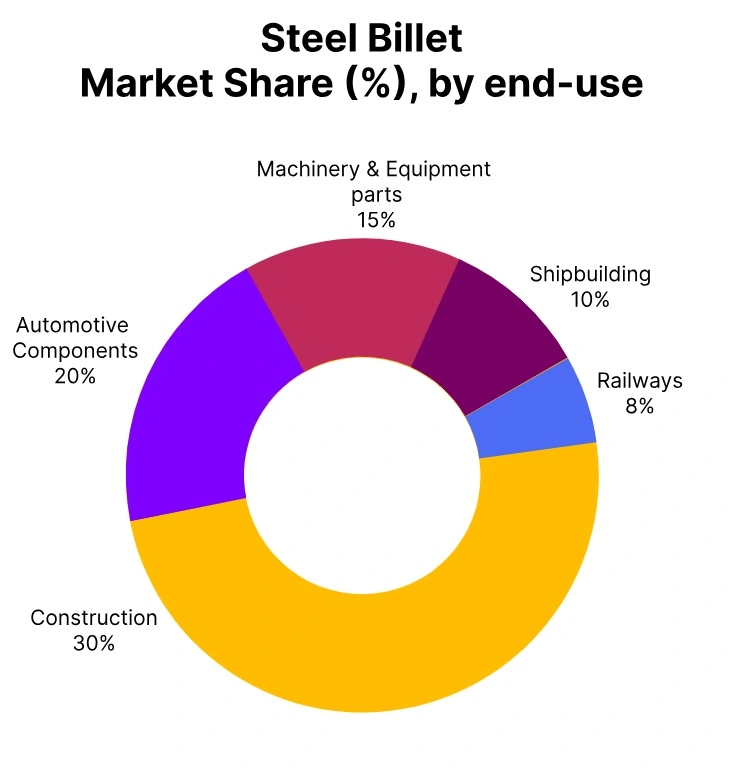Price-Watch’s most active coverage of Steel Billet price assessment:
- 100*100mm EX Alabama, USA
- 100*100mm FD Taranto, Italy
- Q235 (100*100mm) FOB Shanghai, China
- Q235 (100*100mm) CIF Tanjung Priok (China), Indonesia
- 100*100mm (IF Route) EX-Mumbai, India
- 100*100mm (IF Route) EX-Raipur, India
- 100*100mm (IF Route) EX-Chennai, India
- 100*100mm (IF Route) EX-Durgapur, India
- St2sp (125*125mm) FOB Black Sea, Russia
Steel Billet Price Trend Q3 2025
In Q3 2025, global steel billet prices are showing a negative trend due to persistent oversupply particularly from increased Chinese exports coupled with weak downstream demand in key sectors like construction and manufacturing. Seasonal slowdowns and declining raw material costs, such as iron ore and coking coal, have further reduced production costs but also intensified price competition among suppliers.
Narrowing margins and fragile market sentiment are forcing mills to cut prices to maintain sales volumes, especially in Asia where billet offers have already dropped. Overall, the market outlook remains bearish for the quarter.
USA
Steel Billet Domestic prices EX Alabama, USA, Grade- 100*100mm.
In Q3 2025, steel billet prices in the U.S. market have declined modestly by around 0.89% compared to Q2, reflecting a slight downward trend driven by weakening demand from key sectors such as construction and automotive, along with softer downstream steel product prices.
Elevated inventories and moderate input cost pressures have limited any meaningful price recovery, while existing trade protections have offered partial support against import competition. Overall, the market has remained cautious, with gradual price softness persisting amid stable supply conditions.
In September 2025, steel billet prices in the U.S. have fallen by 1.06%, reflecting reduced demand from core industries and increased market supply, further influenced by global economic uncertainty and fluctuations in raw material costs.
Italy
Steel Billet Domestic prices FD Taranto, Italy, Grade- 100*100mm.
According to Price-Watch, In Italy, the steel billet price trend in Q3 2025 experienced a 2.32% decrease compared to Q2, owing to persistently weak domestic demand, continued import pressure particularly from Turkish suppliers, and rising energy costs that are affecting the margins of production in the region.
The sluggish pace of activity in some construction and manufacturing sectors exacerbated overall billet consumption, and buyers tended to exhibit caution amid continued macroeconomic uncertainty.
The price trend had some support from limited restocking at the end of the quarter and incentives stemming from EU policy, but throughout the quarter the overall sentiment was bearish, with the market anticipating stabilization only should supply tighten or input costs ease.
The 0.4% decline in prices for steel billet in Italy in September 2025 has been the result of weak consumption from end-use sectors such as construction and manufacturing. Additionally, increased supply activity from foreign markets may also have added downward pressure to domestic prices.
China
Steel Billet Export prices FOB Shanghai, China, Grade- Q235 (100*100mm).
In the third quarter of 2025, the steel billet price trend in the Chinese market evidenced a slight decline of 1.52% as compared to the previous quarter, primarily from weak domestic demand, especially from the construction and real estate sectors, alongside continued oversupply and lacklustre downstream consumption.
While export shipments helped to some extent, challenges due to global protectionism and high inventory levels prevented prices from receiving much support. The Chinese government attempted to help placate the downwards price pressure through initiatives to reduce steel supply and stabilize the raw material cost in order to help mitigate larger declines in prices; nevertheless, the overall market remained bearish.
Therefore, billet prices averaged slightly lower quarter on quarter, reflecting caution in the overall steel market. The 0.96% decline in steel billet prices in China observed in September 2025 has been a result of lower domestic demand from the construction and manufacturing sectors, largely due to an economic slowdown. In addition, growing output and inventory led to oversupply, contributing to further downward price pressure.





